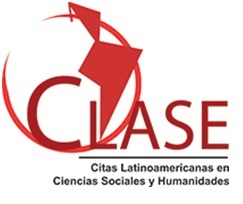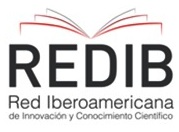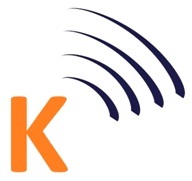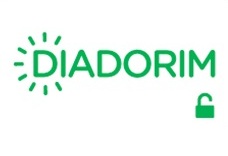Softwares específicos utilizados no processamento de imagens de arte rupestre: uma revisão sistemática
DOI:
https://doi.org/10.11606/issn.2448-1750.revmae.2024.225635Palavras-chave:
Arte rupestre, software, processamento de imagens, DStretch, ERAResumo
Inicialmente, o registro e o processamento de imagens de arte rupestre eram feitos manualmente. Com o avançar da tecnologia, o registro passou a ser feito com câmeras digitais e o processamento das imagens feitos com o uso de softwares genéricos. Seguindo essa evolução, surge então a necessidade de termos softwares voltados especificamente para serem usados no processamento de imagens de arte rupestre e assim, dado que são direcionados ao problema, terem uma melhor qualidade. Desta forma, o objetivo dessa revisão sistemática é apresentar os principais softwares específicos usados no processamento de imagens de arte rupestre. Essa revisão foi baseada na metodologia PRISMA e foi aplicada na base de dados Scopus. Inicialmente, é apresentada uma análise cronológica e evolutiva dos softwares e tecnologias usadas e, na etapa final desse estudo, são apontados os dois principais softwares específicos usados atualmente.
Downloads
Referências
Briola, D. et al. 2017. Agent-oriented and ontology-driven digital libraries: the IndianaMAS experience. Software - Practice and Experience, v. 47, n. 11, p. 1773–1799.
Bryan, P.; Chandler, J. H. 2008. Cost-effective rock-art recording within a non-specialist environment. International Archives of the Photogrammetry, Remote Sensing and Spatial Information Sciences - ISPRS Archives, v. 37, n. July.
Cabrelles, M. et al. 2020. Macro photogrammetry & surface features extraction for paleolithic portable art documentation. Applied Sciences (Switzerland), v. 10, n. 19, p. 1–16.
Cerrillo-Cuenca, E.; Sepúlveda, M. 2015. An assessment of methods for the digital enhancement of rock paintings: The rock art from the precordillera of Arica (Chile) as a case study. Journal of Archaeological Science, v. 55, p. 197–208.
Chandler, J. H. et al. 2007. The development nd application af a simple methodology for recording rock art using consumer-grade digital cameras. Photogrammetric Record, v. 22, n. 117, p. 10–21.
Defrasne, C.; Bailly, M. 2014. Les Oullas: An image bearing rockshelter on a Neolithic Alpine path? Around the Petit-Chasseur Site in Sion (Valais, Switzerland) and New Approaches to the Bell Beaker Culture: Proceedings of the International Conference (Sion, Switzerland - October 27th - 30th 2011), p. 101–110.
Domingo, I. et al. 2015. Evaluating conventional and advanced visible image enhancement solutions to produce digital tracings at el Carche rock art shelter. Digital Applications in Archaeology and Cultural Heritage, v. 2, n. 2–3, p. 79–88.
Earl, G. et al. 2010. Archaeological applications of polynomial texture mapping: Analysis, conservation and representation. Journal of Archaeological Science, v. 37, n. 8, p. 2040–2050.
Evans, L.; Mourad, A. L. 2018. DStretch® and Egyptian tomb paintings: A case study from Beni Hassan. Journal of Archaeological Science: Reports, v. 18, n. August 2017, p. 78–84.
Fryer, J. G. et al. 2005. Recording and modelling an aboriginal cave painting: With or without laser scanning? International Archives of the Photogrammetry, Remote Sensing and Spatial Information Sciences - ISPRS Archives, v. 36, n. 5/W17.
Fuentes-Porto, A. et al. 2020. Analysis of digital images with DStretch as a support for the virtual restoration of an historical mural painting in San Cristóbal de La Laguna. Conservar Patrimonio, v. 2020, n. 34, p. 35–49.
Gil-Docampo, M. et al. 2020. An accessible, agile and low-cost workflow for 3D virtual analysis and automatic vector tracing of engravings: Atlantic rock art analysis. Archaeological Prospection, v. 27, n. 2, p. 153–168.
Hollmann, J. C. 2018. Digital Technology in Research and Documentation of Hunter-Gatherer Rock Art in South Africa. African Archaeological Review, v. 35, n. 2, p. 157–168.
Kamioka, H. 2019. Preferred reporting items for systematic review and meta-analysis protocols (prisma-p) 2015 statement. Japanese Pharmacology and Therapeutics, v. 47, n. 8, p. 1177–1185.
Le Quellec, J. L. et al. 2015. Digital image enhancement with DStretch®: Is complexity always necessary for efficiency? Digital Applications in Archaeology and Cultural Heritage, v. 2, n. 2–3, p. 55–67.
Lerma, J. L. et al. 2014. Range-based versus automated markerless image-based techniques for rock art documentation. Photogrammetric Record, v. 29, n. 145, p. 30–48.
Liberati, A. et al. 2009. The PRISMA statement for reporting systematic reviews and meta-analyses of studies that evaluate health care interventions: Explanation and elaboration. PLoS Medicine, v. 6, n. 7.
Molada-Tebar, A. et. al. 2018. Á. Camera characterization for improving color archaeological documentation. Color Research and Application, v. 43, n. 1, p. 47–57.
Monna, F. et al. 2022. ERA: A new, fast, machine learning-based software to document rock paintings. Journal of Cultural Heritage, v. 58, p. 91–101.
Robert, E. et al. 2016. Applications of digital photography in the study of Paleolithic cave art. Journal of Archaeological Science: Reports, v. 10, p. 847–858.
Rogerio-Candelera, M. Á. 2016. Digital image analysis-based strategies for quantitative monitoring of rock art sites. Journal of Archaeological Science: Reports, v. 10, p. 864–870.
Schulz Paulsson, B. et al. 2019. Elk Heads at Sea: Maritime Hunters and Long-Distance Boat Journeys in Late Stone Age Fennoscandia. Oxford Journal of Archaeology, v. 38, n. 4, p. 398–419.
Publicado
Edição
Seção
Licença
Copyright (c) 2024 Dr. Gerson Meneses, Lucas Renu Maia Castelo Branco, Milena Sotero dos Santos, John Lenon de Brito Vieira

Este trabalho está licenciado sob uma licença Creative Commons Attribution-NonCommercial-NoDerivatives 4.0 International License.


















